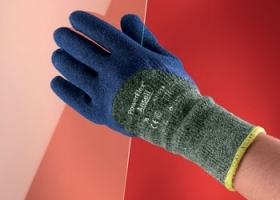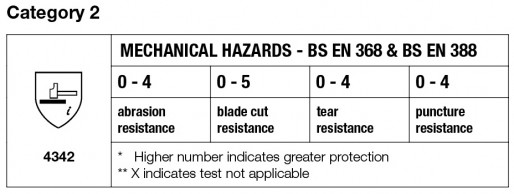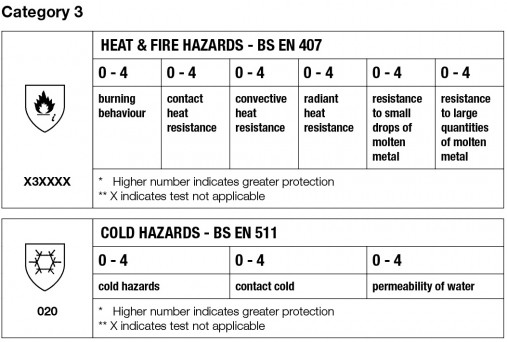Here’s the second installment of GGR Group’s Guide to Safe Lifting, and in this week’s blog we are taking a look at how to protect your hands by choosing the right safety gloves as part of your PPE (Personal Protection Equipment) kit.
Identify the hazards
The first thing to consider is why wearing gloves is necessary for the job you are carrying out and identify what hazards the glove will need to protect you from. What material will you be handling – is it glass, stone, slippery cladding, metal with sharp edges or oily automotive parts?
You should also consider how long and how often you will be using the gloves in contact with the material. Gloves should be regularly inspected for wear and tear before and after use, they will not provide optimum protection forever so will need to be replaced.
Glove classifications
All safety gloves should conform to the UK and EU standards relating to PPE for hands and arms, and it is also useful to know how gloves are classified to select the correct pair. All GGR Group’s gloves have been tested against standards for protection against mechanical hazards, cold hazards and heat and fire hazards (please note that none of our gloves are suitable for handling chemicals or hazardous radioactive materials).
Gloves undergo a number of specific laboratory tests to determine their safety scores from 1-4 or 1-5, the higher the score the more protection given to the wearer.
The mechanical hazard safety test, EN368 and EN388, assesses gloves used for handling rough or sharp objects that could cut, pierce or abrade the skin. This test is split into four sub-categories:
- abrasion resistance
- blade but resistance
- tear resistance
- puncture resistance
Gloves are tested under these four areas because a glove that is resistant to a slash from a blade doesn’t necessarily protect hands against a puncture from a pointed object. Gloves are not tested using powered blades as they shouldn’t be worn near moving machinery due to the risk of them getting caught. Protection against heat and fire hazards is judged by the standard EN407 and cold hazards by EN511.
The symbols and numbers used to mark the protection given by a pair of gloves in each of these categories are shown in the tables below. All gloves should be clearly labeled with this information.
Getting the right fit
It is important that protective gloves allow the wearer to feel as comfortable and unrestricted as possible, giving them enough dexterity and grip to work with their hands.
Choosing a snugly fitting glove in the right size is essential. To find out your glove size wrap measuring tape around palm of hand (not including thumb) and the measurement in inches is your size. GGR’s gloves come in standard European sizes 8, 9 and 10.
Protective gloves can be made from a variety of materials such as Kevlar, leather, PVC studs, steel, glass fibre and latex coatings. To maximize the lifespan of all gloves it is best to store them in a cool, dark environment, remembering that UV light is particularly damaging to Kevlar and latex gloves should not come into contact with oil.
Other issues to consider when looking at glove materials include: – Are the gloves washable? Could the wearer have an allergic reaction to the material? Do the gloves have non-coated backs so hands can breathe?
GGR Group stocks the following protective gloves:-
High cut resistant
Neptune Kevlar 70-421 Fingerless
Neptune Kevlar 70-335 Full Finger
High puncture resistant
High tear resistant
Other specialist gloves
Grab it Safe 28-317 Long Safety Cuff
Follow the link to see our full range of Personal Protection Equipment (PPE).
To help you choose which glove is right for you we’ve put together this useful chart. Click on the link below to see our full range of safety gloves, their protection ratings and what activities they are suitable for.
Trackback URL: https://www.ggrgroup.com/news/protective-safety-gloves-guide/trackback/







